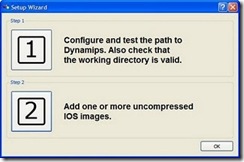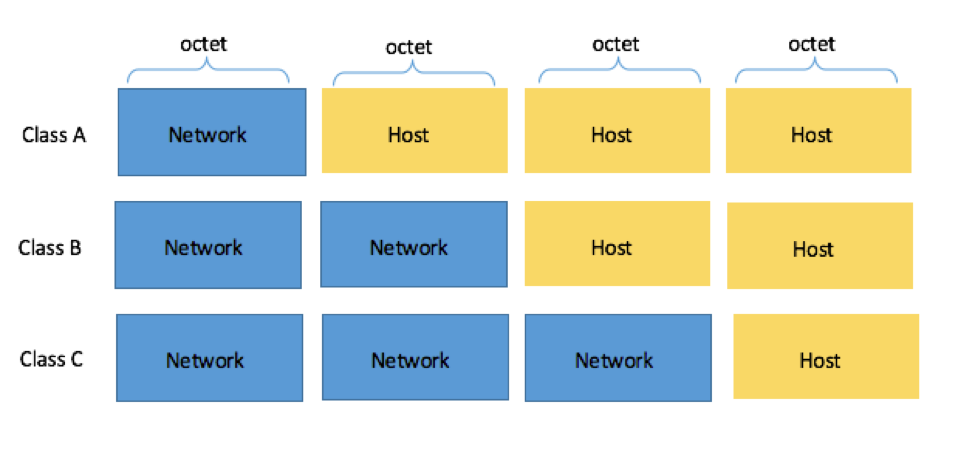Subneting
The process of extending the default subnet mask creates a counting range in the octet that the subnet was extended into, which can be used to represent subnetworks. This allows a single Class A, B, or C network to be subdivided into many smaller groups with each group, or subdivision treated as if it were a network itself. Thus, when we extend the default Class B subnet mask to 255.255.240.0, we do so by extending the subnet mask by 4 bits into the third octet. The number of bits that the subnet mask is extended by represents a counting range for counting the number of subnetworks that new subnet mask can support, using the 2n-2 formula. Thus, the subnet mask 255.255.240.0 subnet mask can support 14 subnets (24-2). In other words, the 65,534 hosts supported by the default subnet mask can now be divided among 14 subnetworks. The number of IP addresses supported by each subnet is called an address range. To calculate the range of addresses for each subnet, we would take the decimal value for the last bit used for the subnet mask as the starting point for the first address in our subnetwork, and then increment that number for each subsequent subnet. In this octet the bit range would be 111100000. The last bit in the subnet mask would thus have a decimal value of 16 (000100000). Therefore the first IP address in the first subnet address range would be 140.12.16.1.
The address ranges for the 14 subnets would be:
• 140.12.16.1 to 140.12.31.254 • 140.12.128.1 to 140.12.143.254
• 140.12.32.1 to 140.12.47.254 • 140.12.144.1 to 140.12.159.254
• 140.12.48.1 to 140.12.63.254 • 140.12.160.1 to 140.12.175.254
• 140.12.64.1 to 140.12.79.254 • 140.12.176.1 to 140.12.191.254
• 140.12.80.1 to 140.12.95.254 • 140.12.192.1 to 140.12.207.254
• 140.12.96.1 to 140.12.111.254 • 140.12.208.1 to 140.12.223.254
• 140.12.112.1 to 140.12.127.254 • 140.12.224.1 to 140.12.239.254
Note: The IP address range for each subnet begins with a 1, as in 140.12.16.1 or 140.12.32.1 and not 140.12.16.0 or 140.12.32.0 as this would be the first address in the subnetwork, and would therefore be the network address. Similarly, the last address in the range ends in 254 and not 255 as the last address would be the broadcast address.
Summarization
Summarization allows the representation of a series of networks in a single summary address. At the top of the hierarchical design, the subnets in the routing table are more generalized. The subnet masks are shorter because they have aggregated the subnets lower in the network hierarchy. These summarized networks are often referred to as supernets, particularly when seen in the Internet as an aggregation of class addresses. They are also known as aggregated routes. The summarization of multiple subnets within a few subnets has several advantages. These include: reducing the size of the routing table; simplifying the recalculation of the network as the routing tables are smaller; network overhead scalability; and hiding network changes.
Automatic Summarization
All routing protocols employ some a type of summarization. RIP and IGRP automatically summarize at the NIC or natural class boundary as the subnet mask is not sent in the routing updates. When a routing update is received, the router checks if it has an interface in the same class network. If it has one, it applies the mask configured on the interface to the incoming routing update. With no interface configured in the same NIC network, there is insufficient information and the routing protocol uses the first octet rule to determine the default subnet mask for the routing update.
Manual Summarization
Both EIGRP and Open Shortest Path First (OSPF) send the subnet mask along with the routing update. This feature allows the use of VLSM and summarization. When the routing update is received, it assigns the subnet mask to the particular subnet. When the routing process performs a lookup, it searches the entire database and acts on the longest match, which is important because it allows for the granularity of the hierarchical design, summarization, and discontiguous networks.
A discontiguous network is a network in which a different NIC number separates two instances of the same NIC number. This can happen either through intentional design or through a break in the network topology. If the network is not using a routing protocol that supports VLSM, this will create a routing problem because the router will not know where to send the traffic. Without a subnet mask, a routing protocol that supports VLSM resolves the address down to the NIC number, which appears as if there is a duplicate address. This will incorrectly lead to the appearance of intermittent connectivity symptoms.
If there are discontiguous networks in the organization, it is important that summarization is turned off or not configured. Summarization may not provide enough information to the routing table on the other side of the intervening NIC number to be capable of appropriately routing to the destination subnets, especially with EIGRP, which automatically summarizes at the NIC boundary. In OSPF and EIGRP, manual configuration is required for any sophistication in the network design. However, because EIGRP can perform summarization at the interface level, it is possible to select interfaces that do not feed discontiguous networks for summarization.
If summarization is not possible, you can either turn summarization off and understand the scaling limitations that have now been set on the network, or you can readdress the network.



